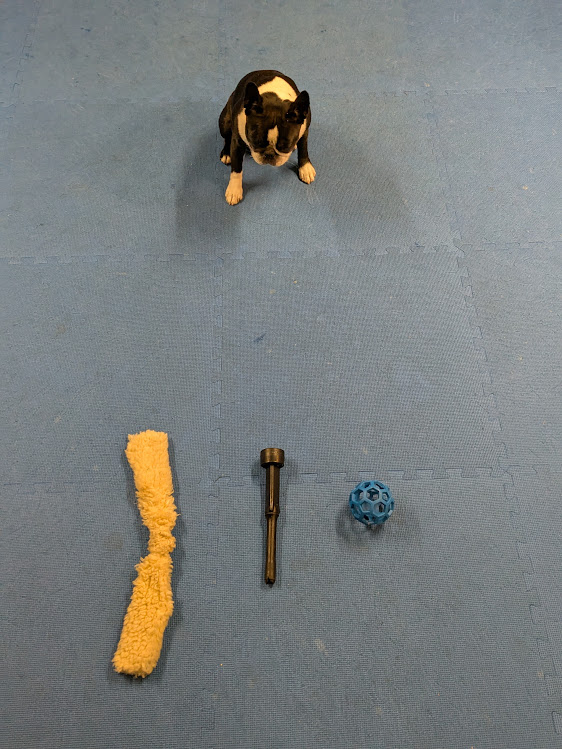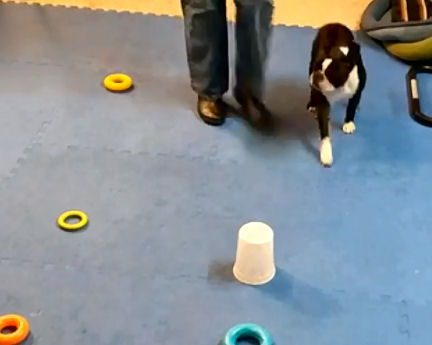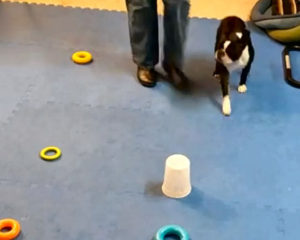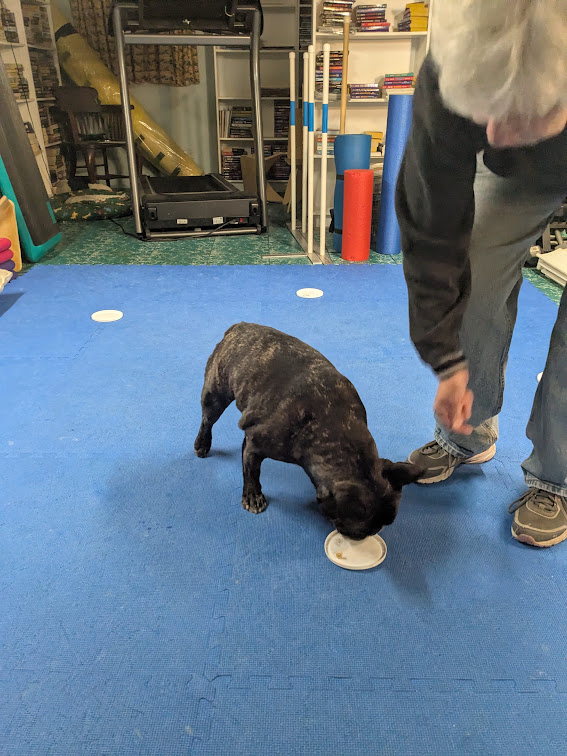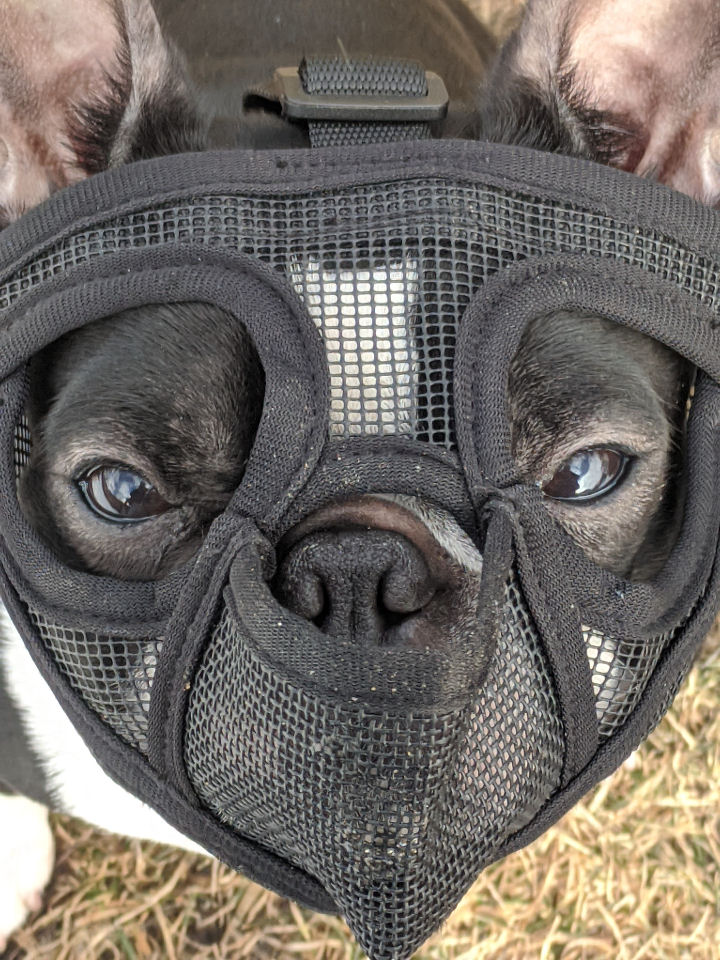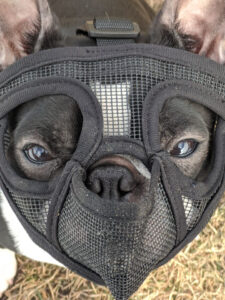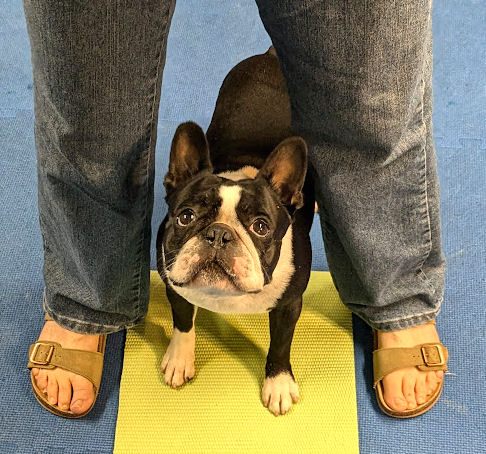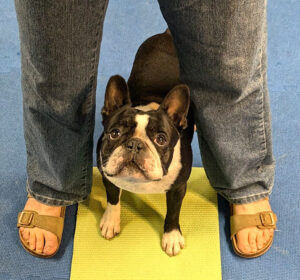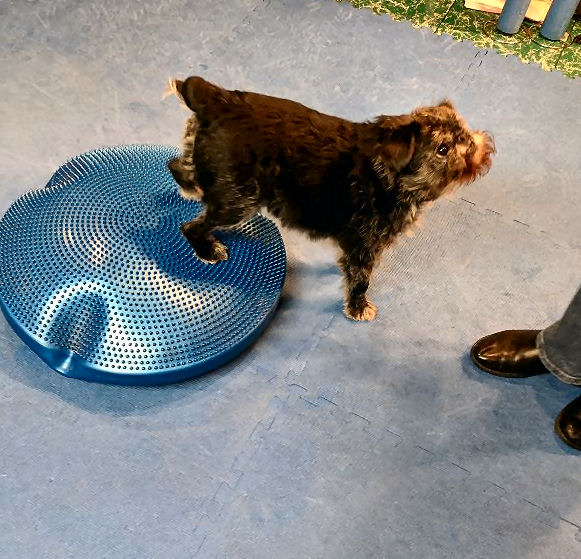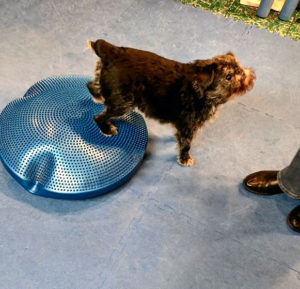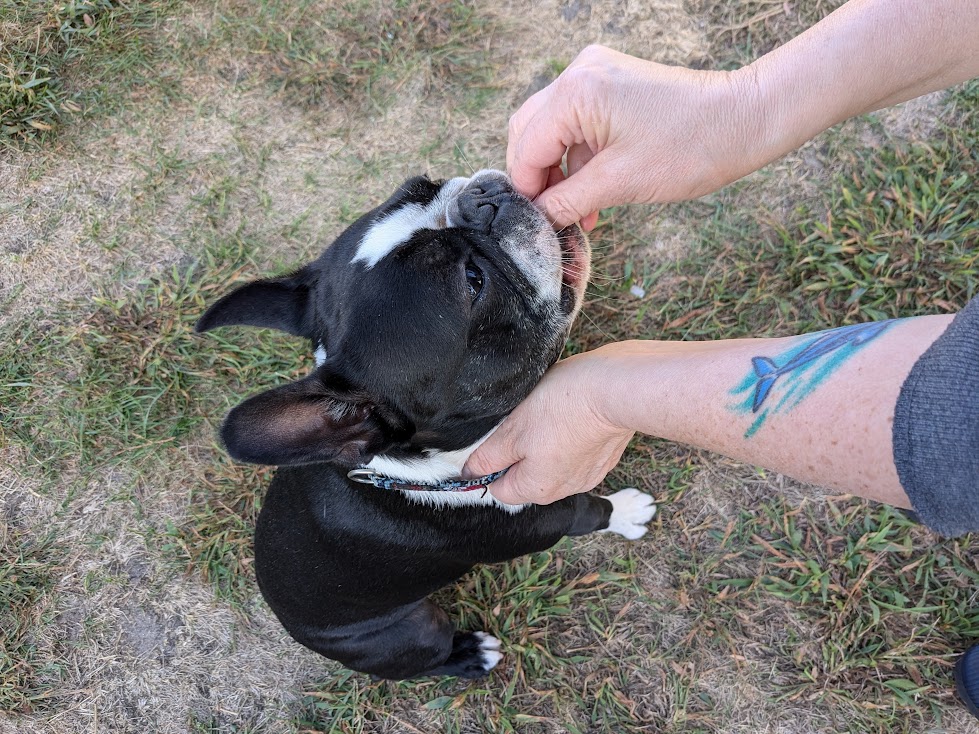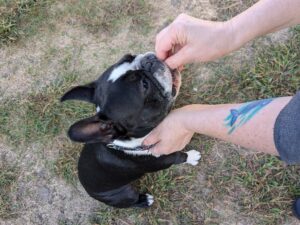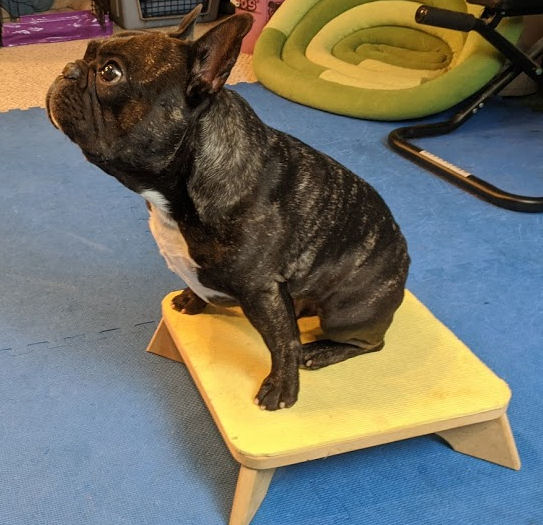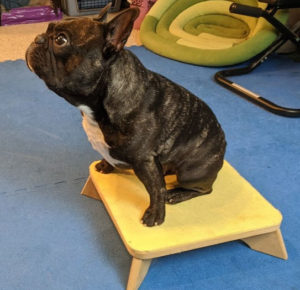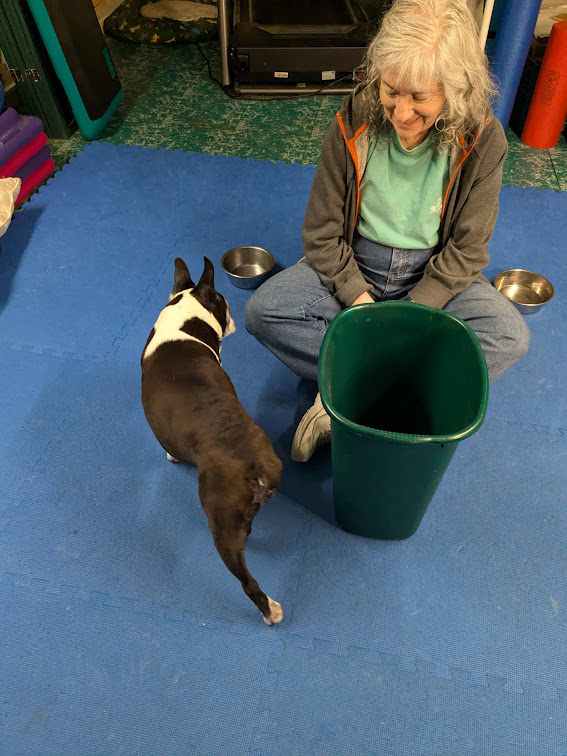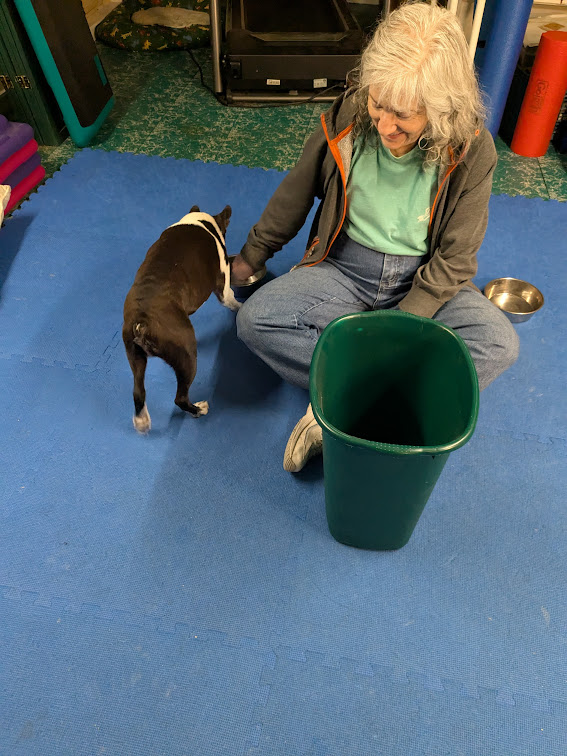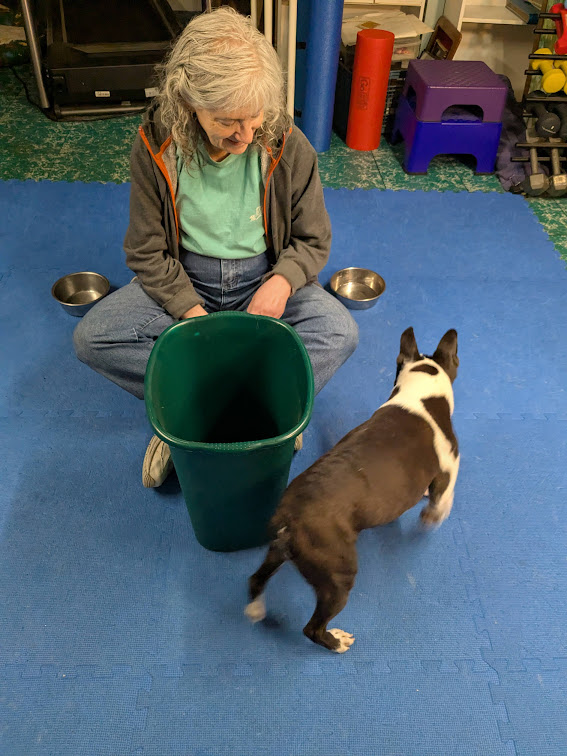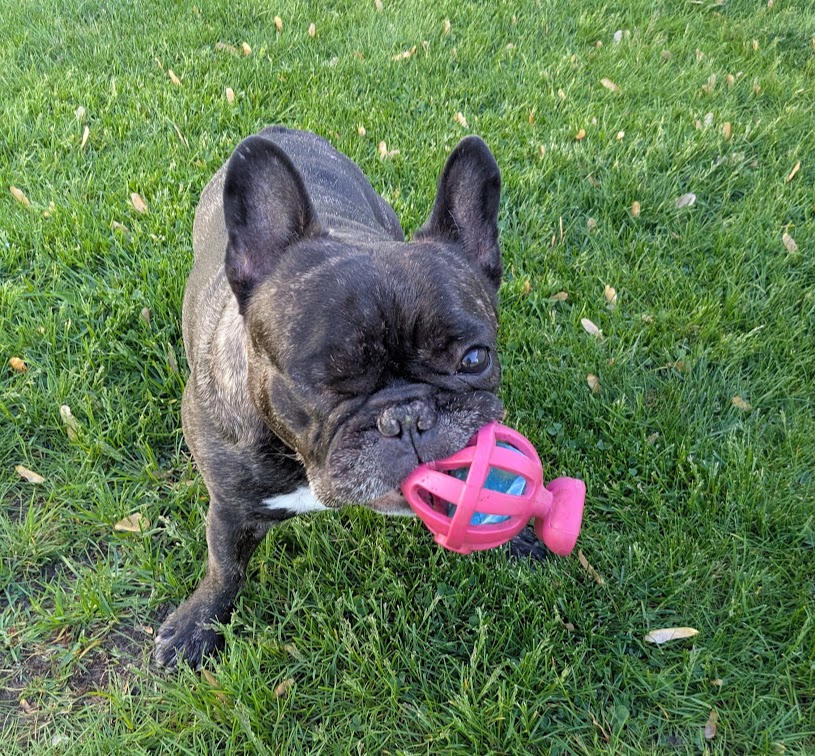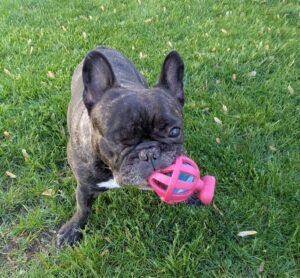The “Trade Ya!” dog training game works in lots of different scenarios:
- Fifi doesn’t like to play with toys. “Trade Ya!” to teach her.
- Phydeaux’s biting at your pants while you walk down the hall? “Trade Ya!” for a tug toy.
- Spot’s grabbing crumpled paper from the wastebasket? “Trade Ya!” for a tossed ball.
- Rover’s munching on anything they shouldn’t? “Trade Ya!” for a yummier treat.
Dogs are great shoppers. They know what they like and what’s not very interesting. The most vivid example we’ve seen is the annual video from the Dogs Trust Ireland. For the holidays, the shelter has a “Santa Paws” day where each dog gets to choose from a roomful of toys. The vast majority of the dogs pick one and stick with it. Not much indecision there. Dogs know what they like.
Good, better, best
And just like people, dogs have a rating system for their preferences. There’s stuff that’s okay. Other stuff that’s good. The next tier is better. And, at the apex is the stuff they’ll run through fire to get.
All of these levels have a place in your dog’s life. To play “Trade Ya!,” you need to know your dog’s rankings for toys. As every dog owner knows, the toys you spent the most money on and thought your dog would adore are probably at the bottom of the list. Now you’ll finally get your money’s worth of fun.
To teach your dog “Trade Ya!,” pick three toys, one each representing good, better, and best. Also have your dog’s absolute favorite treat. Play this game somewhere that’s dog-toy-free. Nothing else around to attract your dog’s focus.
Play with me!
Start with the least-favorite of the three toys. Put the other two someplace you can reach them, but the dog can’t. Slap that toy on the floor and slowly wave it back and forth to get your dog to play tug with you.
Note: be sure you tug side-to-side. Never tug up-and-down to avoid injury to your dog’s neck.
If your dog doesn’t play tug, or isn’t showing any interest, lightly contact your dog’s paws with the toy as you move it across the floor in front of them. Be really annoying with it. Don’t take “no” for an answer. Eventually, your dog will succumb and get hold of the toy.
As soon as the dog grabs the first toy, whip out the second one, slap it on the floor, wiggle it back and forth and say “Trade Ya!” Since this second toy is more interesting to the dog than the first, the dog should readily drop it and grab the new toy you’re offering. (Remember your dog’s reward hierarchy!)
Rinse & repeat
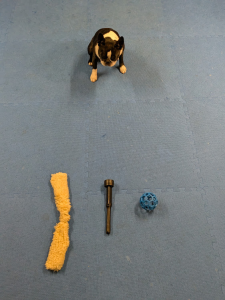
When the dog’s tugging the middle-of-the-road toy, pull out the best toy, slap it on the ground, say “Trade Ya!” Your dog should grab onto the favorite toy and drop the other. Play tug for a moment. Let your dog “win” the game sometimes.
Tug shouldn’t be a duration game. After a few tugs, say something like “That’s all!” and end it. If your dog won’t give up the “best” toy, reach for the high-value treat you brought and once again, say “Trade Ya!”
Lesson of the game
It may take a few sessions for your dog to understand that they’re trading up with “Trade Ya!” In time, they will readily drop what they have to choose the trade option.
Always be sure that the next-level toy or treat is handy before you say “Trade Ya!” If you don’t have something “better,” you’d be lying to your dog. That would poison the game and you might have to start over from the beginning.
Whenever you say “Trade Ya!” your dog will come to expect that they’re getting something even better than whatever it is they have. That applies to anything your dog may have that you’d rather they didn’t. Playing tug is more fun for the dog than biting your pants leg. The best treat is better than chewing on grass. Take advantage of your dog’s pro shopping ability.

